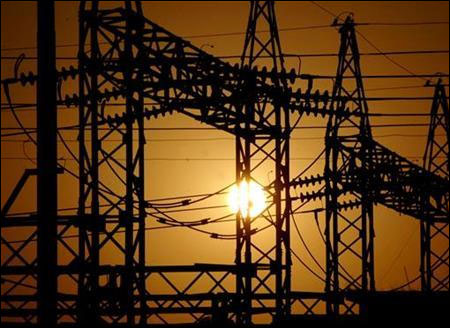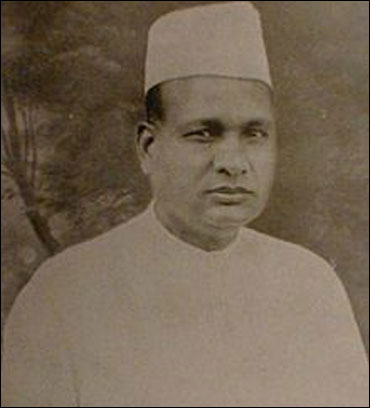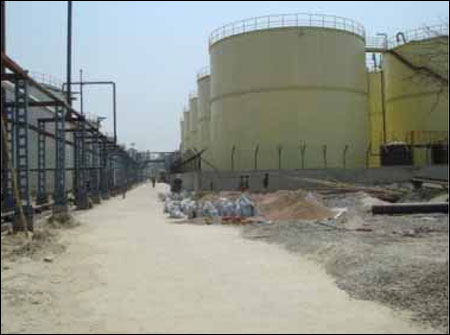 | « Back to article | Print this article |
Kushagra Bajaj embarks on a power play
This lesser known Bajaj is quietly transforming his family business by focusing less on sugar, where he is the country's largest producer, and getting into power.
The following figures are able to say more about Kushagra Bajaj's businesses than anything else. Bajaj Corp - of which Bajaj Almond Oil is a flagship brand, accounting for over 90 per cent of its revenue - rung up sales of Rs 437 crore (Rs 4.37 billion) for FY12.
The sugar business, under Bajaj Hindusthan, brought in Rs 4,918 crore (Rs 49.18 billion). Yet, the FMCG company's market capitalisation, at Rs 2,634 crore (Rs 26.34 billion), is larger than Bajaj Hindusthan's Rs 2,049 crore (Rs 20.49 billion), despite having less than a tenth of the latter's sales.
These numbers are perhaps fundamental to why Kushagra Bajaj, 35, is steadily transforming his business by exploring and entering new areas, the main thrust of which is the power business.
Bajaj, the vice-chairman of the group, says he is eyeing revenues of Rs 20,000 crore (Rs 200 billion) in the next three-four years, when power will replace sugar as his group's biggest contributor.
Now into the 13th year of steering the family business, this Carnegie Mellon and Northwestern University alumnus is credited with the rapid expansion of the sugar business between 2003 and 2007, as well as the streamlining and listing of the consumer care business under Bajaj Corp in August 2010.
He says he is moving rapidly in pursuit of his 'childhood dream' of finding a place among the top business houses in India.
"We are slowly moving towards it. Whether we will succeed or not, time will tell," he says.Click on NEXT for more...
Kushagra Bajaj embarks on a power play
Powering up
The linchpin of his future growth, power, has had a valuable head start - the business has already been producing 420 Mw of green power from crushed sugarcane.
While most of this is captive, it also sells 90 Mw to the state government. Meanwhile, his other business – sugar - continues to be dogged by woes.
The Rangarajan committee's report on sugar, which supposedly will suggest a complete dismantling of all market-distorting controls, is imminent.
But until the report is actually implemented, the sugar industry promises to be an unattractive business proposition for people like Kushagra.
Now, Bajaj plans on ramping up his power play further. In 2009-10, he drew plans to set up five coal-fired power plants with a total capacity of 450 Mw adjacent to its five sugar mills, investing Rs 2,300 crore (Rs 23 billion).
These units went on stream earlier this year, taking the group's capacity to 870 Mw.
The group is now executing another 1,980-Mw power project at Lalitpur in the state at an investment of Rs 12,700 crore (Rs 127 billion).
Bajaj's biggest focus is to ensure the project is commissioned with a time or cost overrun around the last quarter of FY15. Orders for equipment have been placed. While Bajaj is yet to get a domestic coal linkage for the Lalitpur project, he is confident that the plant will secure it.
"We should get a priority, as we are one of the few private sector power projects ready for commissioning in the 12th Plan". However, he has ensured that the project must not languish for want of a timely domestic allocation.
Kushagra Bajaj embarks on a power play
Power sweeter than sugar
The group has bought a coal mine in Indonesia with recoverable reserves of 100 million tonnes that alone can sustain the project for a decade.
But what drew the younger Bajaj to pump Rs 15,000 crore (Rs 150 billion) in power in the first place? "Power will give us a huge cash flow and a fixed return, unlike sugar. We have an assured return of around 15 per cent in power under the cost-plus model, he says."
Bajaj points that he chose Uttar Pradesh for the power project since the demand-supply mismatch is more severe in the state compared to most others where many projects have been lined up. "The power situation in Uttar Pradesh is projected to face a deficit in the coming years too," he adds.
However, Bajaj has tweaked the initial plan to set up two 1,980 Mw plants and is currently focusing only on one. "We have a permission to double the capacity of 1,980 Mw, but, given the current situation, coal availability will be an issue. Moreover, banks are shying away from funding new power projects. So, we have decided not to pursue the second plant at this stage."Click on NEXT for more....
Kushagra Bajaj embarks on a power play
A cumbersome business
The one thing Bajaj has realised over the past 13 years is that his traditional business, sugar, is not going to get him to the lofty rungs of the business stratosphere that he wants to occupy, nor is it going to bring in cash.
Yet, Bajaj's roots in sugar go back a long way, to 1931, when the first mill was set up at Gola with 400 tonnes capacity under Mahatma Gandhi's initiative. Bajaj's great-grandfather Jamnalal Bajaj, under whom the first unit was set up, was an ardent follower and associate of Gandhi.
Today, Palia has a capacity of 13,000 tonnes and Bajaj Hindusthan is undisputedly the country's biggest sugar player with 14 mills in Uttar Pradesh. Under Bajaj's leadership, the company expanded sugarcane crushing capacity from 24,000 tonnes in 2003 to 136,000 tonnes in 2007 by setting 12 new mills at an investment of Rs 4,500 crore (Rs 45 billion).
Sugar, after all, is one of the most regulated industries in India. It operates under draconian laws. Mills can sell sugar only according to the quota given by the government every month and not above this, and a penalty is levied if they fail to sell within the stipulated month.Also, the government directs how much of their output mills are to sell (presently, 10 per cent) to it, at a price it fixes, for distribution through the ration shop system.
Click on NEXT for more...
Kushagra Bajaj embarks on a power play
Draconian rules
Exports are subject to government order, too. If this isn't bad enough, cane procurement by mills is also decided by the government in addition to the catchment area and price.
Such controls contribute to cyclicality in sugarcane/sugar production, depressed sugar prices which often prevail below production cost, payment arrears to farmers and low investments.
The sugar business has witnessed its toughest times in the last few years with an abnormal mismatch between government decided sugarcane price and government influenced sugar price. In some of these years, the industry even failed to make timely payments to farmers and was forced to enter into a series of price-related litigations with the state government.
Bajaj sees this as a positive learning experience. "One had never imagined the sugar business will see a five-year downcycle. The highly volatile domestic sugar cycle has helped us learn a lot and we have come out stronger. It is good when sooner in your career, you are forced to face a tough time".
Unsurprisingly, Bajaj no longer finds sugar sweet. "Most of the sugar business is either central or state government controlled," he said.
The sugar business posted losses of a total of Rs 121 crore (Rs 1.21 billion) in two of the three previous quarters.
Click on NEXT for more...Kushagra Bajaj embarks on a power play
But he does not regret the huge investments made in sugar. "We have economies of scale and it will help us when the cycle turns positive. We are among the least-leveraged sugar companies given our size. However, we are not looking at any fresh investment in sugar".
Meanwhile, the consumer care business has been robust with the stock price doubling in the past one year. The company bid for a number of acquisitions in the FMCG space, both domestic and international, but lost them. "We want to acquire something that can add value to our portfolio but we are not in a hurry.
We are the biggest player in the light hair oil segment. The margins are in the range of 25-30 per cent. There is no debt on the company and it has cash reserves of Rs 400 crore (Rs 4 billion)," he said.
In order to realise his ambitions, Bajaj needs to ensure that the execution of his power projects takes place on schedule or else his debt burden of Rs 10,000 crore (Rs 100 billion) will come back to haunt him.
But, with a measured approach and savvy moves, such as buying an international coal mine while others in the business are facing a supply crunch, has already given this Bajaj a considerable leg- up.






